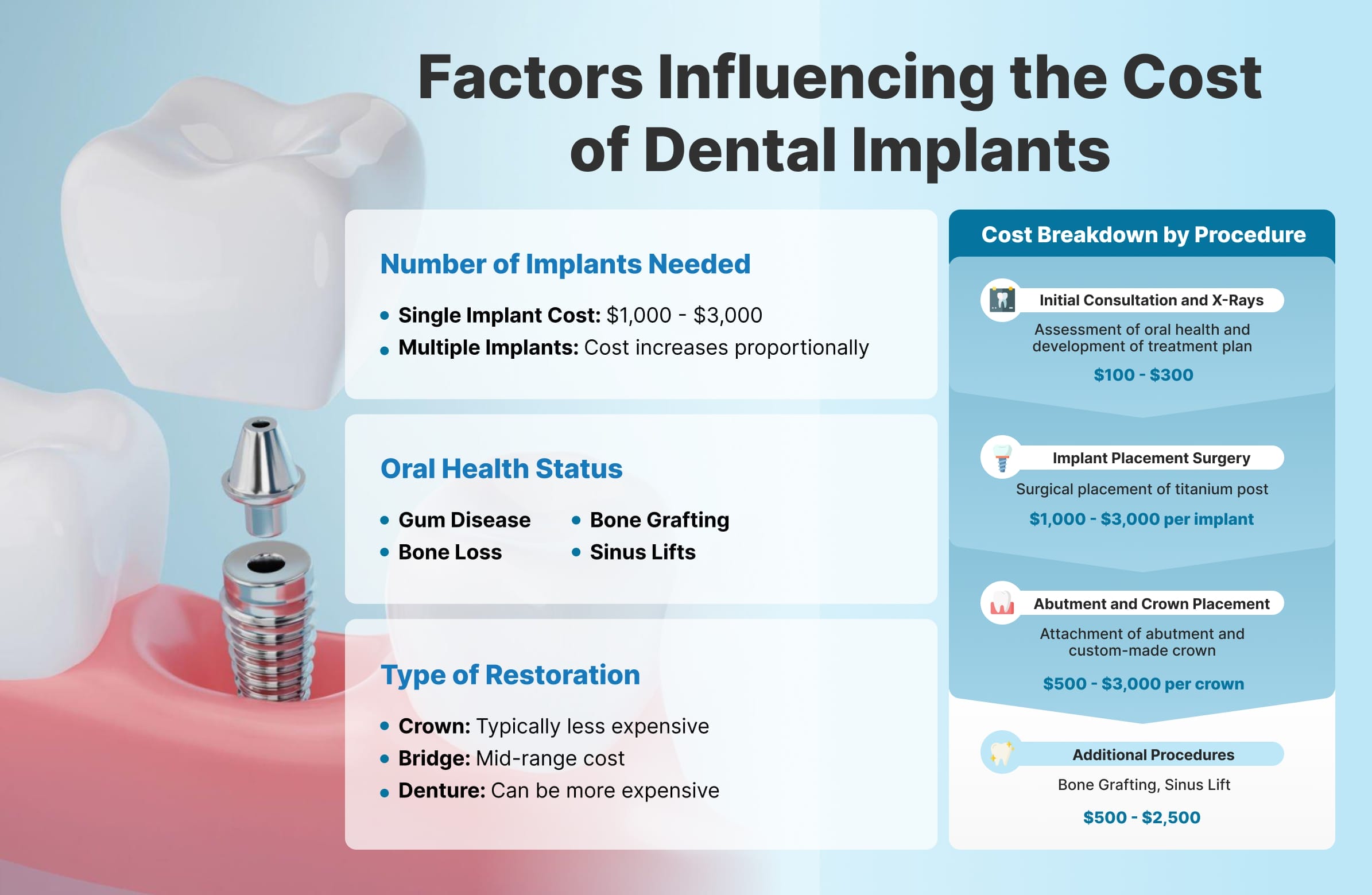Dental Sense for Dummies
Table of ContentsSome Known Factual Statements About Dental Sense The Best Guide To Dental SenseAll About Dental SenseThe Facts About Dental Sense Uncovered
are medical tools surgically dental implanted right into the jaw to restore an individual's capacity to eat or their appearance. They offer assistance for fabricated (phony) teeth, such as crowns, bridges, or dentures. When a tooth is lost due to injury or illness, a person can experience complications such as fast bone loss, defective speech, or adjustments to chewing patterns that result in pain.Oral dental implant systems consist of an oral implant body and dental implant joint and may also include a joint addiction screw. Same day dental implants. The oral implant body is surgically placed in the jawbone instead of the tooth's root. The oral implant joint is generally connected to the implant body by the joint fixation screw and expands with gum tissues into the mouth to support the attached man-made teeth
(http://peterjackson.mee.nu/where_i_work#c2504)Framework of The Oral Implant System selecting dental implants, speak to your oral provider regarding the possible benefits and dangers, and whether you are a candidate for the treatment. Things to think about: Your total health and wellness is an important consider identifying whether you are an excellent prospect for dental implants, for how long it will take to heal, and how long the dental implant may stay in place.
Smoking might affect the recovery procedure and reduce the lasting success of the implant. The healing procedure for the dental implant body may take a number of months or longer, during which time you generally have a momentary joint instead of the tooth. the oral implant procedure: Very carefully comply with the dental hygiene instructions offered to you by your dental provider.
The smart Trick of Dental Sense That Nobody is Talking About
Implant failure can cause the requirement for an additional operation to deal with or change the implant system. Brings back the capacity to eat Brings back aesthetic appearance Aids keep the jawbone from reducing due to bone loss Maintains the health of the surrounding bone and gum tissues Assists keep surrounding (nearby) teeth stable Improves quality of life Damage to surrounding all-natural teeth throughout implant positioning Injury to the surrounding tissues during surgical procedure, such as sinus perforation Injury throughout surgical treatment (for example, fracture of surrounding jawbone) Insufficient feature, such as really feeling like the teeth do not attack with each other generally A feeling that the tooth hangs or twisting in position arising from an abutment screw loosening Implant body failure (looseness of the implant body) as a result of systemic infection, which might be more probable in patients with uncontrolled diabetics issues because of regional infection in bone and gum tissues supporting the implant body due to delayed recovery, which may be a lot more most likely in clients that smoke Difficulty cleansing the periodontals around the implant, causing poor oral health Neglected periodontal disease Post-surgical feeling a knockout post numb due to nerve impingement or damage Constantly inform wellness care carriers and imaging technicians that you have dental implants prior to any kind of magnetic resonance imaging (MRI) or x-ray procedures.
FDA is not knowledgeable about any type of adverse occasions reported for MRI or x-ray treatments with dental implants. Oral implants systems are usually made of materials that adhere to global agreement requirements of the International Company for Standardization (ISO) or ASTM International. These standards have details of what makes a secure material.

A dental implant is a framework that changes a missing out on tooth. With screw-like gadgets, the specialist inserts a dental implant into the jawbone, and it functions as a support for a fabricated tooth, called a crown. A device called a joint attaches the artificial tooth to the oral implant. The crown is custom-made to fit the person's mouth and match the color of their teeth.
Dental Sense Fundamentals Explained
Some people are not eligible for oral implant surgery. It is for oral specialists to run on people with: intense illnessuncontrollable metabolic diseasebone or soft tissue condition or infectionIf these issues are settled, a person can have the surgical treatment. In, oral cosmetic surgeons avoid from operating individuals with: If people with any of the above undergo dental implant surgical treatment, there is a higher risk of the dental implant falling short.

Oral implant surgical procedure is a personalized procedure. It's not the very same for every person. But the following provides a general review of what you can anticipate your dental practitioner, dental doctor, periodontist or prosthodontist to do: Position the implant surgically. Give you time to recover. Attach the article and last crown, bridge or denture.
Next, your surgeon will very carefully position the dental implant right into your jaw. Lastly, your surgeon will certainly reposition your gums and shut the cut with stitches. If your dental implant is near the front of your mouth, your dental professional will certainly make a short-lived tooth for you to use till you recover. This way, you will not have a gap in your smile while you recuperate.
Our Dental Sense PDFs
Throughout the recovery stage, your jawbone must fuse to the oral implant. This process can take anywhere from 3 to nine months.
When your implant heals, your dental professional can connect the abutment (tiny adapter blog post) and your last reconstruction (crown, bridge or denture). This typically takes regarding one hour to finish and might call for a 2nd small surgical procedure. You should not feel any kind of discomfort throughout your dental implant procedure due to the fact that your company will certainly utilize medication to numb your periodontals.